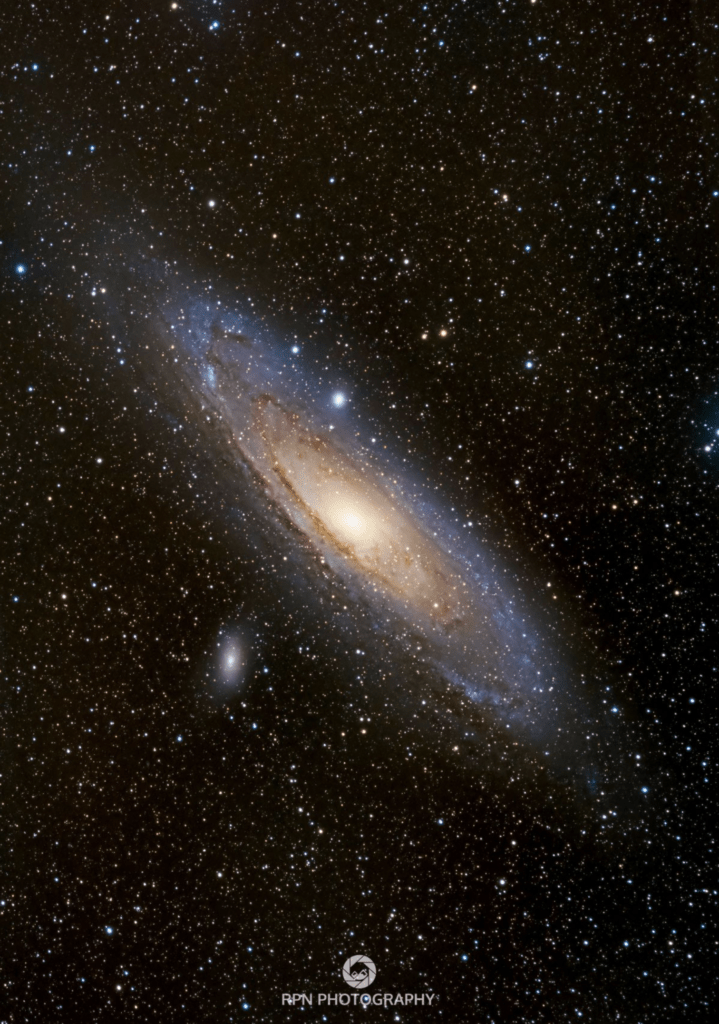Meeting Rob Nolan – Your New Guide To The Stars:
A semi professional photographer for 6 years, my passion for landscape photography lead me to shooting commercial events and weddings. During lockdown when the beautiful Dorset coastline was no longer accessible I decided to combine my two life-long interests; Photography and Astronomy. We enjoy some very dark skies in Dorset, and I’m fortunate to live with very little light pollution, so whilst we couldn’t step out more than a mile from our homes, I was travelling millions of miles across the universe from my very own garden!
Astronomy and Astrophotography are hobbies that can be technically challenging, frustrating and tiring; but the rewards whenyou see a planet for the first time, or a nebula in stunning clarity, make it all worthwhile.
It does help to have a very understanding wife too!
I really look forward to sharing my images with you all and hope that my results and experiences encourage others to take a few moments to step outside and look up to explore the wonders of our universe.
Rob
This Month’s Image: Andromeda (M31)
As we say goodbye to our nearest neighbour until the Autumn as it drops low to the horizon, and we enter the so called ‘galaxy season’, it seemed fitting that my first image should be of a galaxy, and I’ve picked one of the most recognised.

The Andromeda galaxy is the closest big galaxy to our Milky Way. At 2.5 million light-years, it’s the most distant thing you can see with the eye alone. This image, taken in February over 2 nights, demonstrates what can be captured with an equatorial tracking mount, a telephoto lens or wide field telescope and a standard DSLR camera. The image was captured using 2 minute and 60 second exposures at ISO 1600. I also use specialist post-processing software and a process technique called stacking to combine all the all the images together which brings out the detail within the galaxy.
The Night Sky, May 2021: what you can see this month:
After sunset, once the sky is dark enough, look towards the South and see if you can spot the kite shaped constellation of Boötes the Herdsman. The red giant star Arcturus is the brightest star in the constellation it is also the fourth-brightest star in the night sky and the brightest star in the Northern Hemisphere. to the left of Boötes is a semi-circle of stars this is the tiny constellation Corona Borealis, also known as the Northern Crown. The brightest star in this constellation is Alphecca and is known as the jewel of the crown. Look to the left of the crown and you’ll spot the constellation of Hercules, the Strong Man.
The sprawling constellation of Hercules is high in the east, and the brightest globular cluster in the northern hemisphere, M13 (the ‘Hercules Globular Cluster’ a globular cluster of several hundred thousand stars in the constellation of Hercules), is visible to the naked eye on the western side of the asterism known as the Keystone.
The Keystone is formed by four bright stars in the constellation Hercules: Pi, Eta, Zeta and Epsilon Herculis. The trapezoid-shaped pattern makes it easy to identify the constellation; on a clear night, the Keystone can be seen between the bright Vega, the brightest star in Lyra, and the stars of Corona Borealis, the Northern Crown. The asterism represents Hercules’ torso.
On the 14th May look towards the West just after sunset and
you should see the waxing crescent Moon and the planets Mercury and Venus, with both planets lying low above the Western horizon. If you’re a fan of the red planet, it will be visible too; just wait for the sky to get a bit darker and search for the constellation of Gemini. Mars’ distinctive red colour will make it easy to spot amongst the stars in the constellation.
The May full moon (26th May) is known as the Flower Moon – because of all the flowers that
bloom during this month in the Northern Hemisphere. This month’s full moon will also be a supermoon, so we can also refer to this month’s full moon as the Super Flower Moon. The Moon’s physical size won’t change, but because it will be at its closest to the Earth, it can appear up to 14% bigger and 30% brighter, hence a Supermoon, so it is well worth a look.
By: Rob Nolan RPN Photography













